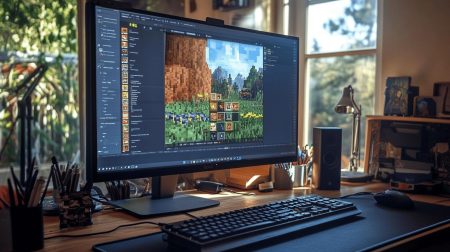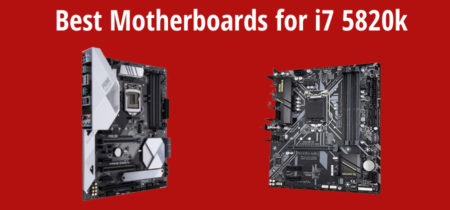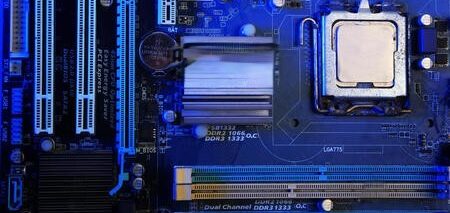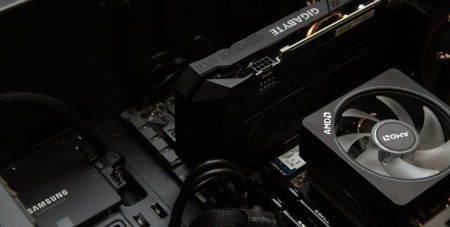The Ryzen 7 5800X is compatible with motherboards with an AM4 socket and supports the AMD X570 or B550 chipset. Some popular options include the ASUS ROG Strix X570-E Gaming and MSI MAG B550 Tomahawk. Make sure to check for BIOS updates for optimal compatibility.
As an experienced PC builder specializing in gaming rigs, I understand the crucial role of selecting the right motherboard. The motherboard acts as the central nervous system of your computer, connecting all components and ensuring seamless communication. When maximizing the potential of an AMD Ryzen 7 5800x processor, choosing a compatible motherboard is essential.
The Crucial Role of a Compatible Motherboard for Ryzen 7 5800x
The impact of using a compatible motherboard on your Ryzen 7 5800x cannot be overstated. A well-matched combination allows for efficient power delivery, stable overclocking capabilities, and enhanced system performance. It also guarantees seamless compatibility with critical components such as RAM modules, expansion cards, and storage devices.
Essential Features for the Best Ryzen 7 5800x Motherboard
Choosing the perfect motherboard for your Ryzen 7 5800x processor requires careful consideration of several key features. As an experienced PC builder and gamer, I can offer expert advice based on firsthand experience with various motherboards.
1. Socket type and compatibility
The first step is to ensure that the motherboard has an AM4 socket specifically designed for AMD processors like the Ryzen 7 5800x. This guarantees a secure fit without any compatibility issues. Verifying that the motherboard explicitly states its support for Ryzen processors is also important.
2. RAM support and capacity
Selecting a motherboard with ample DDR4 memory module support and multiple DIMM slots is crucial for maximizing performance with the Ryzen 7 5800x. Look for a board that can accommodate at least 16GB or more RAM capacity to optimize system performance.
3. Expansion slots and connectivity options
Future-proof your system by choosing a motherboard with sufficient expansion slots, such as PCIe x16 slots for graphics cards and PCIe x1 slots for additional peripherals like Wi-Fi or sound cards. Based on your specific needs, consider connectivity options like USB ports (Type-A and Type-C), SATA ports, M.2 slots, Ethernet ports, audio jacks, etc..
4. BIOS and overclocking capabilities
Enthusiasts looking to push their system’s limits through overclocking should prioritize motherboards with robust BIOS interfaces offering advanced options for tweaking CPU/RAM frequencies, voltage settings, and fan controls.
Best Motherboards for Ryzen 7 5800x
Quick Recommendation
Be sure to check out our quick recommendation product list, or scroll down for more in-depth reviews.
- Ultimate gaming performance with 25 Gbps LAN and Wi-Fi 6: ASUS ROG Strix X570
- Ultimate Performance and Stability for Ryzen 7 5800x Gaming Builds: Gigabyte B550 Aorus Pro AC
- Ultimate Gaming Performance for Ryzen 7 5800x CPU: MSI MAG B550 Tomahawk
1. ASUS ROG Strix X570

(Images Credits: Amazon)
Ultimate gaming performance with 2.5 Gbps LAN and Wi-Fi 6.
Highlights
- Compatible with AMD 3rd Generation Ryzen processors
- Supports DDR4 SDRAM memory technology
- Features a socket AM4 CPU socket
- Equipped with Bluetooth wireless connectivity
- Offers 2 USB 2.0 ports for additional device compatibility
- Designed for gaming consoles and high-performance computing applications
The ASUS ROG Strix X570-E Gaming ATX motherboard is a top-tier platform, especially for building a powerful gaming rig like the Ryzen 7 5800X. With its advanced PCIe 4.0 support, this motherboard unlocks superior bandwidth and speed for cutting-edge GPUs and lightning-fast storage devices—an absolute game-changer for gamers demanding peak performance.
One key highlight of the ASUS ROG Strix X570-E is its comprehensive cooling system, including active PCH heatsinks and a MOS heatsink with an integrated heatpipe designed to handle intense gaming sessions without breaking a sweat. Pair that with Aura Sync RGB lighting for full customization, and you get function and form to showcase your unique style in any setup.
Selecting this ASUS board as our number one pick wasn’t just about raw power; it’s also about connectivity and user experience. The inclusion of Wi-Fi 6 ensures smooth online gameplay even when wireless is your only option—no more frustrating lag spikes during clutch moments! Dual M.2 heatsinks keep those speedy NVMe SSDs cool under fire. The blend of aesthetics with performance makes the ASUS ROG Strix X570-E Gaming the cornerstone for building an enviable gaming system that looks as good as it performs.
Pros
- Fast gaming networking with 2.5Gbps LAN and Intel Gigabit Ethernet
- Supports PCIe 4.0 for high-speed connectivity
- A comprehensive cooling system to keep the motherboard running smoothly
- ASUS Aura Sync RGB lighting for customizable lighting effects
Cons
- Higher price point compared to other X570 motherboards
- Some users may find the RGB lighting too flashy or unnecessary
- May require BIOS updates for full compatibility with newer AMD Ryzen CPUs
Click Here to view it on Amazon.
Approx Price: $347.18
2. Gigabyte B550 Aorus Pro AC

(Images Credits: Amazon)
Ultimate Performance and Stability for Ryzen 7 5800x Gaming Builds.
Highlights
- Supports AMD 3rd Generation Ryzen processors
- Features DDR4 RAM memory technology for high-speed processing
- Comes with 6 GB memory storage capacity and a memory clock speed of 2133 MHz
- Equipped with a wireless type of 802.11ac for seamless connectivity
- Compatible with personal computers and Windows 10 platform
- Socket AM4 CPU socket for easy installation and use
The thermal design is no less impressive with its Fins-Array heatsink and direct touch heatpipe, keeping temperatures down even when pushing your rig to its limits. For gamers looking to future-proof their system, this ATX motherboard’s ultra-durable PCIe 4.0 ready x16 slot is pivotal, offering blazing fast data transfer speeds that are perfect for high-end graphics cards or NVMe SSDs – imagine loading into maps so quickly that you’re always one step ahead.
Considering the fierce competition, it wasn’t easy to reach the number two spot on our list, but what tips the scales in favour of Gigabyte B550 Aorus Pro AC is its emphasis on high-speed connectivity and immersive audiovisual experiences. The onboard Intel Dual Band WiFi and rapid 2.5GbE LAN minimize latency dramatically—every command feels instantaneous from keystroke to action—a boon in competitive online arenas where I’ve reaped tangible benefits time after time. And let’s not overlook aesthetics; RGB Fusion 2.0 allows customizable LED lighting syncing effortlessly with other AORUS devices for a truly personalized gaming setup that dazzles performance and looks.
Pros
- PCIe 4.0 Ready x16 Slot for ultra-fast data transfer speeds
- Advanced thermal design for improved heat dissipation
- True 12-plus-2 phases digital VRM solution for stable power delivery
- Supports 3rd Gen AMD Ryzen Processors for high-performance gaming
Cons
- Limited PCIe 4.0 support for expansion cards
- Can be a bit pricey compared to other B550 motherboards
- Some users may find the RGB Fusion 2.0 software complicated to use
Click Here to View on Amazon
Approx Price: $132.30
3. MSI MAG B550 Tomahawk

(Images Credits: Amazon)
Ultimate Gaming Performance for Ryzen 7 5800x CPU
Highlights
- Supports AMD 3rd Generation Ryzen processors
- DDR4 RAM Memory Technology with a maximum speed of 4866 MHz
- Features AMD B550 Chipset for high performance and stability
- Comes with 6 USB 2.0 ports for connectivity options
- Offers compatibility with personal computers and Windows platform
- Excellent customer reviews, rated at 4.7 out of 5 stars from over 4,995 ratings
The MSI MAG B550 TOMAHAWK excels with its PCIe 4.0 support and Lightning Gen 4 M.2 slots equipped with M.2 Shield Frozr, ensuring swift loading times and top-tier storage performance—an essential advantage during intense gaming sessions where every second counts. The premium thermal solution keeps everything cool under pressure, critical for maintaining peak performance without any throttling issues that could spell disaster mid-game.
I appreciate this motherboard’s commitment to aesthetics and functionality; Mystic Light provides customizable RGB lighting that adds flair to any setup, while dual LAN options ensure reliable network connectivity—a lifesaver for uninterrupted online play or streaming. Audio Boost technology also delivers immersive sound quality that can enhance the gaming experience by offering crisp in-game audio cues.
Securing its position as No. 3 on our list comes down to the board’s excellent balance of features at a competitive price. Offering advanced connectivity such as USB 3.2 Gen 2×2 Type C alongside solid build quality makes it a wise choice for gamers who expect reliability without breaking the bank. While there may be pricier options with extra bells and whistles or more budget-friendly boards that skimp on features, the MSI MAG B550 TOMAHAWK hits that sweet spot—delivering what you need in an ATX form factor without excess frills.
Pros
- Lightning-fast gaming experience with PCIe 4.0 and Lightning Gen 4 M.2
- Premium thermal solution for efficient heat dissipation
- Immersive gaming experience with studio-grade sound quality
- Customizable RGB LED lighting for a personalized look
Cons
- Limited support for older AMD processors
- Some users may find the RGB lighting excessive
- The price point may be too high for budget-conscious consumers
Click Gere to view on Amazon
Approx Price: $149.99
Expert Installation Guide for the Best Motherboard Compatibility with Ryzen 7 5800x
Now, it’s time to pair it with a motherboard that ensures optimal performance. In this section, I will guide you through the step-by-step installation process and provide some tips and precautions along the way.
1. Gather Your Tools
Before starting the installation process, ensure you have all the necessary tools. You will need a screwdriver (preferably magnetic), thermal paste, an anti-static wrist strap (optional but recommended), and your Ryzen 7 5800x processor and compatible motherboard.
2. Prepare Your Workspace
Find a clean and well-lit area to work on your PC build. Ensure you have enough space to lay out all the components without obstructions. It’s also important to ground yourself by wearing an anti-static wrist strap or touching a grounded metal object before handling any sensitive components.
3. Install CPU into Socket
Begin by carefully removing your motherboard from its packaging and placing it on a non-conductive surface such as its box or an anti-static mat. Locate the CPU socket on the motherboard; for Ryzen processors like the 5800x, it will be an AM4 socket.
Gently lift up the lever next to the socket to open it up. Take your Ryzen 7 5800x processor out of its protective cover, using caution not to touch any of its pins or delicate parts underneath.
Aligning the golden triangle indicator on both sides (found in one corner of both CPU and socket), gently place your processor within its designated slot in one smooth motion—avoid applying excessive force or wiggling during this step.
Once properly aligned, lower down gently onto pins until fully seated within their corresponding holes in sockets. Finally, close the lever to secure AMD’s best chip.
4. Apply Thermal Paste
To ensure efficient heat transfer between your Ryzen 7 5800x processor and cooler, apply a small amount of thermal paste. This allows for optimized efficiency when operating under heavy loads.
5. Install Cooler
Now install a cooler suited specifically for Ryzen series CPUs. Depending on whether an air-cooled or liquid cooling solution is used, attach mounting brackets around the AM4 chipset and securely fasten them using screws provided with the cooler. If a liquid cooling solution is used, refer to the instructions.
6. Connect Power Supply Cables
Locate power connectors near the motherboard’s CPU area, typically labelled “ATX12V,” and connect the appropriate power cable from the PSU firmly until it clicks into place, providing the reliable support needed.
7. RAM Installation
Install RAM modules designed specifically for Ryzen series boards, increasing overall system efficiency. Refer to the manual for guidance based on dual-channel configurations, usually alternating slots. Align each module notch within the corresponding slot(s) and press down until they click securely into position. This ensures proper contact points are made without visible gaps between module edges and slot walls.
8. Additional Connections
Depending on other components you plan to install, such as graphics cards or storage devices, refer to the manual for connecting them, including PCIe slots for GPUs, SATA ports for SSDs/HDDs, USB headers, and front panel connectors.
9. Double-Check Connections
Before closing the case, double-check that all connections are securely fastened and properly aligned to prevent potential issues during the boot-up process.
10. Close Up Case
Once satisfied with the connections made so far, carefully place the PC case back and align the screw holes. Use the screws provided to secure the case firmly in place.
11. Cable Management
Organize the cables inside the PC case using cable ties or Velcro straps to improve airflow and maintain a clean aesthetic appearance, making future upgrades and maintenance easier.
12. Power On & Test
Connect the necessary power cables from the PSU to the respective components and plug in peripherals such as a monitor, keyboard, and mouse. Then, press the power button!
If everything has been done correctly during the installation, you should be greeted with a successful boot-up sequence followed by the BIOS initialization screen or the operating system loading directly, depending on the settings configured earlier within the BIOS.
Maximizing the Performance of Your Ryzen 7 5800x with the Right Motherboard
To truly harness the power of your Ryzen 7 5800x processor, it is crucial to pair it with a compatible and high-quality motherboard. In this section, I will share expert tips on maximising the performance of your Ryzen 7 5800x by choosing the right motherboard.
1. BIOS Optimization
The BIOS controls various hardware settings on your motherboard. Updating your BIOS to the latest version the manufacturer provides can improve compatibility and enhance performance.
2. XMP Profile
Enabling XMP (Extreme Memory Profile) in the BIOS automatically configures your RAM for faster data transfer rates and improved system responsiveness.
3. Overclocking
Overclocking can provide a significant performance boost for advanced CPU and RAM users. However, caution should be taken as improper overclocking may void warranties or cause instability.
4. Regular Updates and Maintenance
Keeping drivers and firmware up-to-date is essential for optimal compatibility between components. Proper airflow within your PC case is also important for maintaining stability.
5. Performance Monitoring
Monitoring software such as HWMonitor or MSI Afterburner allows you to monitor vital system information in real-time, identifying potential performance issues.
6. System Health
Regularly checking for signs of overheating and ensuring the proper functioning of fans are crucial for long-term stability.
Conclusion: Making the Right Choice for Your Ryzen 7 5800x
Diving into the world of high-performance gaming and multitasking, you now have all the insights to pair your Ryzen 7 5800X with a motherboard that will do justice to its capabilities.
The ASUS ROG Strix X570 stands out for its robust performance, making it an excellent choice for those who push their systems to the limit. Please don’t overlook the Gigabyte B550 Aorus Pro AC; it’s packed with features essential for gamers and power users while being mindful of your budget.














